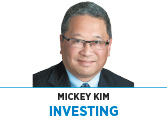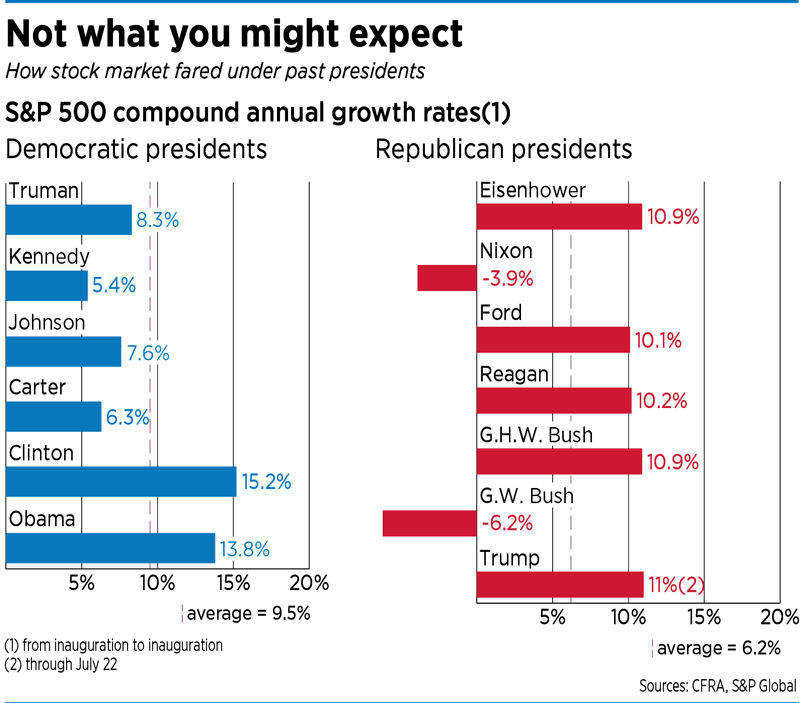Subscriber Benefit
As a subscriber you can listen to articles at work, in the car, or while you work out. Subscribe Now I never make predictions, particularly in writing, but it’s a sure bet the vitriol and partisan political assault we’re going to be subjected to over the next 100 days will make 2016 seem like an ice cream social.
I never make predictions, particularly in writing, but it’s a sure bet the vitriol and partisan political assault we’re going to be subjected to over the next 100 days will make 2016 seem like an ice cream social.
Both Donald Trump and Joe Biden (and their supporters) predict doom if the other is elected. Information is filtered through the lens of confirmation bias, our tendency to give too much weight to findings that support our existing beliefs. Unfortunately, it’s increasingly rare for folks (including me) to listen openly to opposing views, let alone seek out alternate perspectives.
 As Simon & Garfunkel sang in “The Boxer,” “a man hears what he wants to hear and disregards the rest.”
As Simon & Garfunkel sang in “The Boxer,” “a man hears what he wants to hear and disregards the rest.”
As the partisan storm increases in intensity over the coming weeks, you may be tempted to make changes to your portfolio because of how you believe a short-term event like an election will impact the financial markets. Don’t. Making an anxiety-based change because of your political beliefs will be harmful to the long-term health of your portfolio.
The president is only one of many factors that influence the market. Others—including corporate profitability, interest rates and inflation—may have more impact than who resides in the White House.
Sam Stovall, chief investment strategist for research firm CFRA, dissected price changes for the S&P 500 going back to 1945 based on election results. He soon will be publishing his findings, but graciously provided me with his data.
Since World War II, incumbents seeking re-election won 80% of the time (Truman, Eisenhower, Johnson, Nixon, Reagan, Clinton, Bush 43 and Obama) and lost only twice (Carter and Bush 41). Additionally, the S&P 500 has been a good predictor of whether the incumbent president, or his party, was re-elected or replaced.
In presidential election years since 1944, when the S&P 500 rose from July 31 to Oct. 31, the incumbent or his party was re-elected 82% of the time. This indicator failed in 1968 (Humphrey lost to Nixon) and 1980 (Carter lost to Reagan). Conversely, when the S&P 500 lost ground, it signaled the replacement of the incumbent 88% of the time. The only failure was Eisenhower’s defeat of Stevenson in 1956.
GOP administrations are generally viewed as “pro-business” and conventional wisdom is stocks do better with a Republican in the White House. There has, indeed, been a huge difference in returns during Democratic vs. Republican administrations. However, as is often the case, conventional wisdom is wrong. Stovall found that from Harry Truman’s inauguration on April 12, 1945, through July 22, 2020, the average annual return for the S&P 500 was more than 50% higher with Democrats in the White House (9.5% vs. 6.2% for Republican administrations).
Try not to fret about things you can’t control. Instead, develop an investment plan based on your long-term goals and stick to it. Your financial future will depend far more on how much you save and invest than on who wins the election.•
__________
Kim is Kirr Marbach & Co.’s chief operating officer and chief compliance officer. He can be reached at 812-376-9444 or [email protected].
Please enable JavaScript to view this content.

Great story. I am forwarding this to my kids.
Mickey, the political issue this year isn’t the election outcome per se. The issues are two:
uncertainty and fragility in the political and economic systems, as well as stocks peaking on thin economic news and thinner earnings justifications (because there’s lots of money chasing yield based on low interest rates).
.
Given all this, it is probably be prudent for investors to take another look at risk and exposure to inflated stock prices and especially today’s version of the “Nifty Fifty” that make up a significant percentage of the S&P and NASDAQ indices.